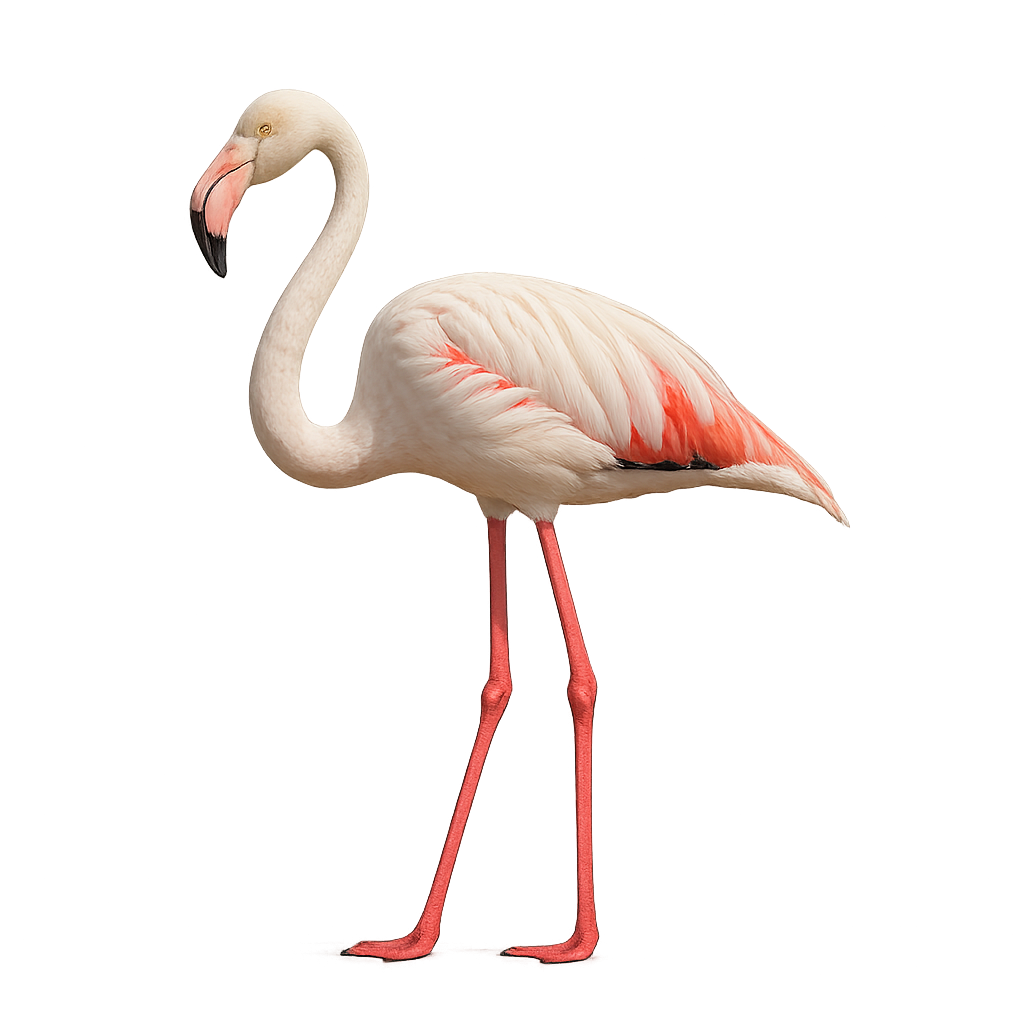Observe and photograph a species in its natural habitat
Learn where and when to observe a species in the wild, how to recognize it in the field, and what habitats it lives in. Get photography tips adapted to its behavior and capture stunning images without disturbing the animal. For full details, open the complete profile in the WildlifePhotographer app.
Greater Flamingo
Scientific name: Phoenicopterus roseus

IUCN Status: Near Threatened
Family: PHOENICOPTERIDAE
Group: Birds
Shyness: Suspicious
Safe distance: 40 m
Breeding season / Courtship: 01.02-30.04
Gestation: 27 à 31 jours
Births: 01.05-31.07
Habitat:
Wetlands and lagoons
Description:
The Greater Flamingo is a large bird with distinctive plumage, easily recognizable by its vivid colors and graceful silhouette. It stands about 1.4 to 1.7 meters tall and weighs between 2.5 and 4 kg. Its plumage is primarily pale pink, with more intense shades on the wings, and its long legs and neck give it a majestic posture. The Flamingo's beak is curved downward, allowing it to filter water and feed primarily on plankton, small shrimp, and algae. This bird primarily inhabits wetlands, saline lagoons, and salt marshes, where it often gathers in large colonies. Flamingos feed by dipping their heads into the water while walking in shallow waters, using their beaks to filter food. While the species is not threatened, it faces risks related to habitat loss, pollution, and human disturbance.
Recommended lens:
>=300 mm
Photography tips:
Use a telephoto lens to photograph from a distance, respecting the discreet and gregarious nature of the species.
Photograph early in the morning or late in the afternoon, when the soft light enhances the pink hues of its plumage, the reflections on the water, and the graceful silhouettes of the flock.
Look for it in wetlands such as lagoons, salt marshes, shallow lakes, and mudflats rich in microorganisms. The greater flamingo feeds by filtering water and mud, extracting small invertebrates, crustaceans, and algae, which contribute to its pink coloration.
Be patient and discreet. Avoid sudden movements and noise, and always keep a respectful distance to avoid disturbing natural behavior, especially during courtship displays or breeding season.
The Greater Flamingo is classified as Least Concern by the IUCN. Although widespread, protecting the peace of its wetland habitats—highly sensitive to human disturbance—is essential to support breeding colonies.
Ready to take action?
Choose your platform and start your free trial today



